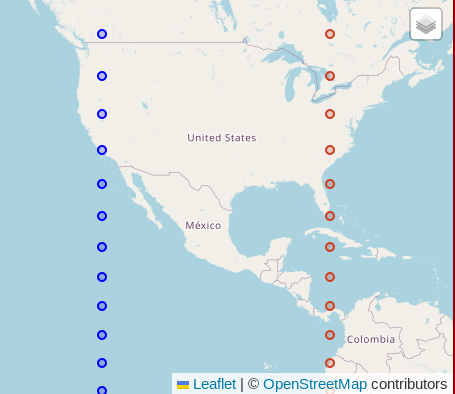Using v4 of the Postgres H3 extension
I wrote about using the H3 extension last year in Using Uber's H3 hex grid in PostGIS and H3 indexes for performance with PostGIS data. Naturally, things have changed over the past 12 months, specifically version 4 of the H3 Postgres extension was released. The H3 Postgres extension (h3-pg) closely follows the upstream H3 project, including naming conventions. The changes made in H3 version 4 unfortunately changed every function name used in my original blog posts. It seems this mass renaming was a one-time alignment in the H3 project, hopefully they don't all get renamed again.
This post covers the changes required to migrate the code in my prior two posts work with version 4.x h3-pg.
Create the h3 extension
Creating the extension for PostGIS usage now involves installing two (2)
extensions. Some components have been split out into the h3_postgis
extension.
I use CASCADE when installing the h3_postgis portion since that also
requires postgis_raster which I do not have installed by default.
CREATE EXTENSION h3;
CREATE EXTENSION h3_postgis CASCADE;
Track performance differences with pg_stat_statements
This is my entry for PgSQL Phriday #008. It's Saturday, so I guess this is a day
late!
This
month's topic,
chosen by Michael from pgMustard,
is on the excellent pg_stat_statements extension.
When I saw Michael was the host this month I knew he'd pick a topic I would want
to contribute on!
Michael's post for his own topic
provides helpful queries and good reminders about changes to columns
between Postgres version 12 and 13.
In this post I show one way I like using pg_stat_statements: tracking the
impact of configuration changes to a specific workload. I used a contrived change
to configuration to quickly make an obvious impact.
Process to test
I am using PgOSM Flex to load Colorado OpenStreetMap data to PostGIS. PgOSM Flex uses a multi-step ETL that prepares the database, runs osm2pgsql, and then runs multiple post-processing steps. This results in 2.4 GB of data into Postgres. That should be enough activity to show something interesting.
PgOSM Flex for Production OpenStreetMap data
The PgOSM Flex Project is looking forward to the 0.8.0! If you aren't familiar with PgOSM Flex, it is a tool that loads high quality OpenStreetMap datasets to PostGIS using osm2pgsql. I have a few examples of using OpenStreetMap data loaded this way.
I am extremely excited about PgOSM Flex 0.8.0 because the project as a whole is really starting to feel "production ready." While I have been using PgOSM Flex in production for more than 2 years, there have been a few rough edges over that time. However, the improvements over the past year have brought a number of amazing components together.
PgOSM Flex 0.8.0 does include a few ⚠️ breaking changes! ⚠️ Read the release notes for full details.
PgOSM Flex in production
What does "in production" mean for a tool in a data pipeline?
- Reliable
- Easy to try out
- Easy to load/update to prod
- Low friction software updates
This post covers why I think PgOSM Flex meets all of those requirements.
Accuracy of Geometry data in PostGIS
A common use case with PostGIS data is to calculate things, such as distances
between points, lengths of lines, and the area of polygons.
The topic of accuracy, or inaccuracy, with GEOMETRY data comes up often.
The most frequent offenders are generic SRIDs such as 3857 and 4326. In some projects
accuracy is paramount. Non-negotiable. On the other hand, plenty of projects
do not need accurate calculations. Those projects often rely on relationships
between calculations, not the actual values of the calculations themselves.
If Coffee shop Y is 4 times further away than Coffee shop Z. I'll often go to
Coffee shop Z just based on that.
In most cases, users should still understand how significant the errors are. This post explores one approach to determine the how accurate (or not!) the calculations of a given SRID are in a particular region, based on latitude (North/South). The queries used in this post can be adjusted for your specific area.
Set the stage
The calculations in this post focus on the distance of two points situated 40 decimal degrees apart. The points are created in pairs of west/east points at -120 (W) and -80 (W). Those were picked arbitrarily, though intentionally spread far enough apart to make the errors in distance calculations feel obviously significant. The point pairs are created in 5 decimal degree intervals of latitude from 80 North to 80 South. The following screenshot shows how the points frame in much of North America.
While the points on the map using a mercator projection appear to be equidistant... they are not!

Audit Data with Triggers: PGSQL Phriday #007
Welcome to another #PGSQLPhriday post! This month's host is Lætitia Avrot, who picked the topic of Triggers with these questions:
"Do you love them? Do you hate them? Do you sometimes love them sometimes hate them? And, most importantly, why? Do you know legitimate use cases for them? How to mitigate their drawbacks (if you think they have any)?"
Let's dive in!
Triggers are a specialized tool
I rarely use triggers. I don't hate triggers, I just think they should be used
sparingly. Like any specialized tool, you should not expect to use triggers for every
occasion where they could be used.
However... there is one
notable use where case I really like triggers: audit tables.
Part of the magic of using triggers for auditing data changes in Postgres is
the JSON/JSONB support available.
